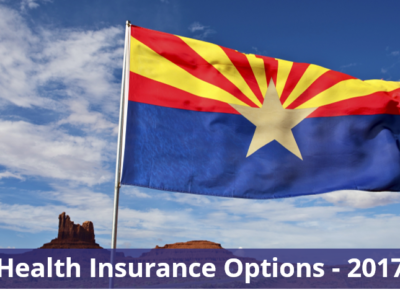
Updated 10.24.18. We will continue to update this page with the latest plan information. Stay tuned!
To date, Florida has the highest number of residents enrolling through the federal exchange. Nationwide, 11.7 million people enrolled through Healthcare.gov in 2018. Of that 11.7 million, 1.7 million of them (or 14.6 percent) were Floridians. Outlined in our 2018 Guide from last year, Floridians had 6 insurers to choose from on the federal exchange. In 2020, one new insurer is added to the list, providing at least one other option to look at if you’re looking to purchase insurance through the exchange.
What’s Different
- Availability of short-term plans that can last a year. These short term, limited duration plans (STLDs) come with more restrictions, such as limits on preexisting conditions, and offer less coverage (i.e., no coverage on well-visits or maternity care), but their lower price point can be attractive to those that are relatively healthy and looking for more affordability.
- Individual mandate is disappearing. As a brief refresher, the Individual Mandate fines Americans who opt out of obtaining health coverage. Beginning in 2020, this mandate no longer exists. While some think this measure could send premium prices up as the markets adjust for an exodus of healthy young people, it might have less effect than people think. You see, healthy young peeps weren’t buying plans the way families and older folks do and the markets are priced for that. Even with the individual mandate in place, healthy young people could decide to pay $200 a month for health insurance they didn’t think they needed or a $200 fee once a year.
- QSEHRAs are becoming more popular. For small companies and startups that can’t afford traditional group plans, QSEHRAs (aka Qualified Small Employer Health Reimbursement Arrangements) offer a new way to reimburse for premiums and medical expenses tax-free. Plus, in addition to being reimbursed for plans and alleviating the financial burden of individuals buying their own health insurance, employees can choose their own plan that works best for them instead of fitting into a one-size-fits-all group plan! If you or your employer wants to learn more about this, we have a first-of-its-kind QSEHRA guide that explains everything you need to know!
- 5.2% Average Increase in Premium Rates.
While Floridians aren’t seeing a decrease in rates, this is a much preferable increase compared to the alarming 44.7% increase from 2017 to 2018.
CMS reports that on average, rates are dropping 1.5% across the country. This is a hopeful glimpse into what our future could look for healthcare insurance premiums. The overall average rate increase of 5.2 percent is calculated before premium subsidies are applied. These subsidies will keep growing to keep up with the rise of premium costs. More specifically, to keep pace with the premium of the second-lowest-cost silver plan in each area. In other words, customers who are eligible for these subsidies are generally protected from premium increases. But keep in mind that plan changes are sometimes necessary to avoid a rate increase.
What’s the same
Obamacare is still intact, despite the efforts of the Trump administration.
- Doctor networks continue to stay small: In order to keep costs down, carriers have limited the number of physicians in your area that they will cover. This strategy, while financially effective for the carrier, can leave the consumer vulnerable to increased costs because of the higher possibility of having to see an out-of-network provider. Even if your doctor is on your plan this year, it’s worth double checking for this coming year, since things might have changed. Our doctor search tool on our website is a simple way to do that!
- Shortened enrollment period: Just like in 2018, open enrollment is only 6 weeks—Nov 1 to Dec 15.
- Slashed funding: Funding for the marketplace has been further reduced, which means there will be less advertising and awareness campaigns helping people make smart choices. Federal ‘navigator’ grants to states that are meant to help educate and enroll people in health insurance were slashed by more than half this year. The Obamacare navigator’s funds were cut by 74% in Florida this year. They will now only receive $1.25 million, which will be split between the 6 different navigators we have here. While this is the second largest grant awarded to any state, following closely behind Texas, it is still a restricting budget.
- Subsidies: Federal subsidies are expected to be available to those who qualify. These subsidies help many of our locals afford healthcare coverage that normally wouldn’t be able to otherwise. To give some perspective, 91 percent of the Florida residents who enrolled in coverage during open enrollment for 2018 are receiving premium subsidies.
- Outages: There are 60 hours of scheduled downtime for scheduled maintenance that could get in the way of individuals researching and signing up for plans. Take note that from 12 a.m. to 12 p.m. every Sunday, except for the last Sunday of open enrollment, you can’t access healthcare.gov.
The Complete Lineup: Individual Health Insurance in Florida 2020
There are currently six insurers in Florida offering health insurance plans both on and off the federal exchange in 2018. The 7thand newest player in 2020 will be Oscar Insurance. In addition to these options, two other insurers will be offering plans off the federal exchange only.
*Remember: On-exchange plans are those that you can purchase through the ACA marketplace or exchange. If you are eligible for a tax credit, you can only apply the credit with an on-exchange plan. Off-exchange plans are those that you can purchase directly from a carrier or broker. You cannot use a tax credit with an off-exchange plan.
Use our website to estimate your tax credit, search for your doctors, and compare on and off-exchange options in your zip code. If using a tax credit, we will automatically route your applications to healthcare.gov.
Here are your options for individual health insurance in Florida for 2020.
- Ambetter (Celtic)
Celtic is an EPO network plan available on and off the federal exchangewith an estimated monthly premium of $606 per person. This is a 5.9 percent increase from last year.
- AvMed Inc
AvMed is an HMO plan available off of the federal exchange only. Monthly premiums are estimated to be $721 per person, which is a 7.4% increase from 2018.
- Blue Cross Blue Shield of Florida (Florida Blue)
BCBS is an EPO network available on and off the federal exchange. Average monthly premium estimated per person for 2020 is $685- 2.4 percent increase from 2018.
- Cigna Health and Life Insurance Company
Cigna Health and Life is an HMO plan available only off of the federal exchange. Their monthly premiums are increasing by 10 percent, raising the amount paid per person to $710.
- Florida Blue HMO (Health Options)
Health Options is an HMO plan available both on and off the federal exchange. Monthly premium rates have increased by 7.2 percent- this increase brings the estimated cost that each person will pay to $616 each month.
- Florida Health Care Plan Inc.
FHCP is a subsidiary of Florida Blue on an HMO network, available both on and off the federal exchange. Monthly premiums per person is estimated to be $593 which is a 5.6 percent increase from 2018.
- Health First Health Plans
Health First is an HMO plan, available on and off the federal exchange. There was a significant jump in monthly premium cost per individual. Rates are now expected to rise to $657 per person- a 9.8 percent increase from 2018.
- Molina Healthcare of Florida
Molina is an HMO plan, available on and off the federal exchange. Good news is that there is a 1.5 percent DECREASE on premiums, dropping the average rate per person to only $560 for their monthly premium.
- Oscar Health
We like Oscar Health for a variety of reasons- they are affordable and have been labeled an insurance business as well as a technology company. They create personalized products for their customers that are unique in this field. Oscar is an EPO plan available on and off the federal exchange. The average monthly premium per person is estimated to be $599.
Affordable Alternatives You Should Know About
Major medical plans may not be the best choice for everyone. If that’s the case for you, or even if you’re simply looking for more affordable options, check out some of these alternatives to traditional insurance.
Pivot short term plans:Pivot provides short term medical insurance solutions until a qualified major medical health plan is chosen. Pivot plans are renewable 90-day plans which, in most states, can be automatically renewed 4 times without additional medical screening to provide up to 12 months of continuous coverage. This is a great option for those who plan on obtaining health insurance in the near future- through a new job, change in marriage status, or some other form of a life change.
United Health One: This affordable alternative offers a lot of flexibility to those looking for a short term solution. First consumers choose the term length- from 30 day minimum up to the state maximum. Then they choose a deductible and coinsurance amount that fits the budget. Note that it’s only available in a handful of states. Good news: Florida is one of them!
Enrollees have access to United Health Care’s large network of doctors and hospitals. With United Health One plans you must use a network doctor or hospital in order for insurance to pay for eligible expenses, only emergencies are allowed out of network.
Faith-based: Medi-Share is a Faith-based program that has a state-wide PPO network available in 2020 managed by PHCS (Private Healthcare Systems, now owned by Multiplan). It may be smaller than some of the PPO networks in the past, but it does provide flexibility to see your doctors and will cover out-of-network expenses as long as it meets Medi-Share’s faith-based guidelines. Medi-Share won’t be for everyone but is a good option if it happens to fit your personal convictions and lifestyle. Make sure to check out our Medi-Share review and compare it to other major medical plans on our website before you enroll.
Next steps: What’s my best option?
While more choices are a welcome change, hunting down and comparing all of these options can feel overwhelming. However, at TakeCommandHealth.com we help you compare all of your options side-by-side including off-exchange plans, marketplace plans, and faith-based options. You can use our award-winning tools to search for your doctors, check your prescriptions, and even simulate conditions and health needs to make sure you get the most of for your money.
A few other updates we’d like to tell you about:
We’ve expanded the capabilities of our doctor search tool to search doctor networks from all of the carriers above (no matter if the plan is off-exchange, on the marketplace, or faith-based).
We’ve negotiated some pretty awesome deals for our members. Call a doctor 24/7 for $0, enjoy medical bill negotiation support, a personalhealth advocate, dental, vision, and pharmacy discounts, etc. These really help save money with some of the higher deductible plans.
We’re pretty confident we have the biggest, most complete line-up of plans in Florida this year. With growing demand, we’ve also put together a bigger support team ready to help you tackle any issue. You can get started by chatting with one of our licensed professionals on our website or emailing us at support@takecommandhealth.com.
Once open enrollment begins, you can visit our website and we’ll walk you through your options. Our goal is to help you get the most out of your money and find the plan that really works for you and your family.
Remember you have until Dec 15th to select a plan that starts Jan 1st, 2020.
About Take Command Health
Take Command Health launched three years ago with the goal of bringing awareness, advocacy, and transparency to the confusing world of health insurance for small businesses and individuals. Take Command Health is at the forefront of this issue, a recognized leader in QSEHRA administrationand small business tax strategy, with customers in every state. It operates in Arizona, California, Florida, Georgia, Indiana, Michigan, North Carolina, Pennsylvania, Texas, Tennessee, and Wisconsin for individual insurance and offers small business HRA administration nationwide.















